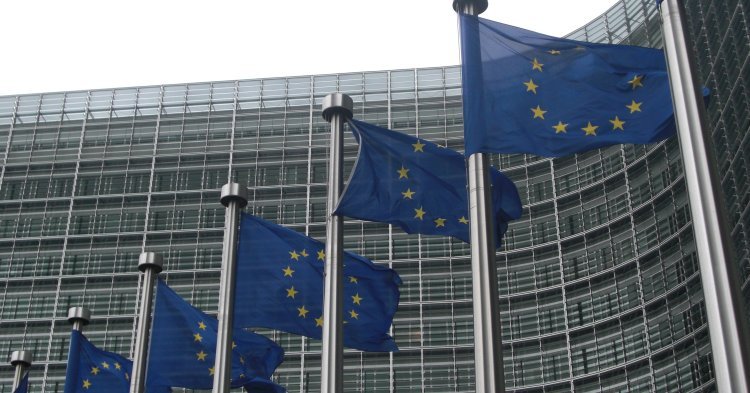On the 2nd of February 2021, the UN Office on Drugs and Crime (UNODC) released a trend report on human trafficking and its conclusions are alarming. It found that over the past few years, global human trafficking rates have been increasing.
Multiple conventions signed across the 20th century have tried to guarantee one’s right against being enslaved, for example the 4th article of the European Convention on Human rights that prohibits slavery and forced labour. Target 8.7 of the UN 2030 Sustainable Development Goals also aims at eradicating modern slavery across the world. But the conclusions of the UNODC report and the data published by Global Slavery Index in 2018 might leave one feeling that the eradication of modern slavery by 2030 is not feasible. Indeed, the number of people in modern slavery in Europe and Central Asia in 2018 was estimated at 3.590.000 by the Walk Free Foundation.
Modern slavery comes in different forms: forced labor, human trafficking, or forced marriage. In Europe, the latter form of modern slavery is not that common; the most prevalent forms are human trafficking and forced labor. They usually they go hand in hand, as forced labor usually occurs right after someone becomes a victim of trafficking.
The figures on modern slavery in Europe
In the UNODC report, the figures are divided into 2 for EU Member States. In Western and Southern Europe 11,839 victims were identified in 2018. Most of them were not citizens of the country they were enslaved in, and 44% were victims of sexual exploitation, whereas 32% were undergoing forced labor. The remaining percentage is exposed to exploitative begging, or other types of enslavement.
In Central and South-Eastern Europe, 1,732 victims were detected in 2018, which is significantly less than statistics for other regions. Many explanations could be given, such as government responses to human trafficking, but we will not open that Pandora’s box in this article as it is too complex to tackle in a few paragraphs. The registered victims in this region see their freedom taken away for sexual exploitation (64%). The remaining are victims of forced labor (18%) or other types of exploitation (18%).
Finally, the latest Report of the EU Commission on the progress made in the fight against human trafficking concludes that nearly half of the victims are EU citizens (49 %), and one third (34 %) of the victims were trafficked within their own EU Member State. The most vulnerable citizens in Europe come mostly from Romania, Hungary, the Netherlands, Poland and Bulgaria. Other figures highlight the vulnerability of the victims, as the vast majority of the victims are women and girls (72%); while one in every four (22%) victims of trafficking are children.
European legal framework on human trafficking
In the European Union, the main legal framework in the area is the directive 2011/36/EU of 5 April 2011 on preventing and combating trafficking in human beings and protecting its victims, which replaced the Council Framework Decision 2002/629/JHA. The directive aims at tackling the issue by setting two key principles: prevention and protection. Following the directive, the EU Commission communicated a European strategy on Eradicating the Traffic on Human Beings, based on 5 priorities. This directive also aims for better coordination between the EU Member States when it comes to transnational cases of human trafficking.
One of the interesting mechanisms created by the 2011/36/EU directive is the report carried out by the Commission every two years on the progress made in the fight against human trafficking in the EU. The third and most recent report dates 20 October 2020. It highlighted the need for this fight to remain a top priority for the Union, especially as the Covid-19 pandemic exacerbates the vulnerability of potential trafficking victims.
The European Union is accompanied in this fight by the Council of Europe, which created a Group of Experts on Action against Trafficking in Human Beings (GRETA). This body publishes constantly guidance notes addressed to the States. On 19th of June 2020, it brought up a note on the topic of migration and human traffic, emphasising the need for Member States to act in these cases under the principle of non-refoulement, which means victims should be protected by the host state from dangers in their own country.
Europol activity
Combatting trafficking in human beings is one of Europol’s priorities for 2018-2021. Certainly, the number of suspects with regards to human trafficking crimes has increased lately: from 4,127 in 2014 to 11,788 in 2017-2018. However, for 2017-2018 there were only 6,163 prosecutions and 2,426 convictions, even though 14,145 victims were registered officially.
Of course, we can only imagine the true dimensions of human trafficking in Europe. After all, we have all come across someone who is a victim of it. The figures displayed in this article are just numbers that help us grasp the bigger picture, but they do not show the reality of this scourge, nor do they show the pain and suffering that victims undergo when their freedom is taken away and they are put into invisible chains. Perhaps it is because of these invisible chains that most of us ignore the fact that some people are denied their liberty, which should not happen in the 21st century.
Slavery still exists in many forms in Europe and it is time for it to cease. The solutions should be focused on prevention and social cooperation, as well on finding the perpetrators of human trafficking and reintegrating victims safely into society.


Follow the comments: |
|
